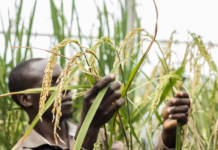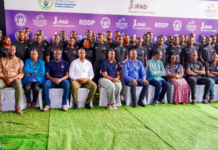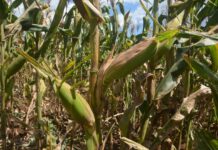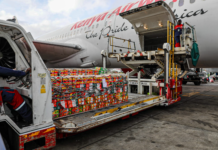By Jane Marsh
From an environmentalist perspective, mining is antithetical to climate objectives. It disrupts ecosystems, displaces wildlife and extracts copious natural resources from precious lands. Africa’s economic history is laden with mining ventures, which modern agriculturalists are attempting to reclaim as a sustainable success story.
Farming Ventures on Reclaimed Mining Lands in Africa
Many experts throughout Africa suggest mining lands can boost agricultural production. Stakeholders assert it could even be a mutually beneficial venture to partner with mining executives. However, the projects come at a high price. Experts suggest restoration could cost up to US$250 million to fix the land and water to a place where they can support agriculture.
The nation is known for its gold production and subsequent galamsey, though land destruction and high pollution rates tarnish any organization’s attempts at developing an eco-friendly image. The reality has not stopped some mining businesses from creating environmental goals and plans to reduce impact and reclaim nature. They are doing so with the guidance of farmers and locals.
These ventures consider gold’s limited quantities. The partnerships are preparing communities for when reserves run dry, and the regions must be able to support farming moving forward. Current initiatives have successfully supported diverse crops, including mangos, cashews and cabbage, to name a few.
Focusing on cash crops is crucial, as the return on investment is necessary to justify the up-front costs. The strategic choice also plays into locals’ strengths and expertise. Involving communities in rehabilitation is more effective when their knowledge of the most conducive crops is innate to the area. Other projects include fixing Kenya’s limestone quarries and South Africa’s sand mining tailings.
Factors Influencing Success and Sustainability
Soil remediation is a long-term goal. Mining activities leave behind a large wound on habitats, requiring intense pollution management and geoengineering to reinforce soils. It may require advanced technologies and government cooperation to expedite processes before projects become abandoned. However, the efforts should always remain informed by the future outlook and prosperity.
Mining sites have had their hydrology permanently altered. Crops need access to clean, reliable water to promise safe, competitive yields for farmers. The water should be free of contaminants and influences that would disrupt the pH or nutrient density of the soil, such as sulfur or chemicals. At high levels, even elements as common as sulfur can change water’s chemistry and influence taste and smell in quantities as small as one part per million.
Here are several additional considerations stakeholders should consider when dedicating resources and time to mining restoration projects for agriculture:
- Data scarcity: These projects are new in Africa, so the leading organizations will craft the first data stores to influence other initiatives. Limited information on how to succeed cannot inhibit development.
- Climate goals: The urgency is higher than ever, especially as climate change makes environments more volatile and resources more limited.
- Community engagement: Involving locals in the process is vital for the long-term sustainability of these projects. It increases commitment to the land while boosting the chances of the projects aligning with eco-friendly objectives long term.
The Types of Potential Projects Inspired by Farming on Mined Lands
This example demonstrates a practical and optimistic approach to balancing the transition between mining reliance and resource independence. It could spur numerous other benefits for small and large farms alike.
Green Funding Programs
Large-scale collaborations leverage the financial and community resources of mining stakeholders. The connections present more well-rounded monetary benefits for farmers, providing equitable loans throughout the value chain to support eco-friendly agricultural development. Mining leaders’ input may also influence political sway, encouraging more support for sustainable goals.
Economic and Competitive Campaigns
The commissions and projects should inspire neighbors in other African countries and international competitors. They prove that a synergetic relationship between miners and farmers is possible and set a precedent for how other countries should execute any operation extracting natural resources.
Oil Palm Operations
Projects like the Solidaridad Network and the National Initiative for Sustainable Climate-Smart Oil Palm Smallholders demonstrate how some of the most valuable farming options are primed for healing mining sites. The crop is resilient, even if the soil is not immediately viable. Additionally, it empowers residents to remain in regions even after a mine is depleted.
Livestock Grazing
In some reclaimed mining areas, livestock can safely graze with little fear. It gives utility to regions that may not be able to support large crop production yet. However, ranchers managing these animals could be exposed to harmful influences and safety concerns from the abandoned mines, so further protections are necessary to maximize this potential benefit.
Crop Production
Rehabilitation on mined lands supports native crops, even the most profitable ones. However, this can vary based on region, soil health and dedication to restoration over a long period. Even though mining hubs are still popping up in places like Morocco, supplementary actions to promote agricultural wellness on sapped lands include expanded fertilizer accessibility and more robust investments.
Agroforestry
Planting trees has been key in restoring damaged African ecosystems, primarily in Nigeria and Kenya. They inject essential nutrients back into the land while reinforcing soil stability to better hold water. While this is beneficial on its own, it complements crop production efforts by making the region more suitable for higher-maintenance varieties.
Community Gardens
In South Africa, a mining company spearheaded a community garden project to alleviate food burdens. While it may not be on mined lands, it demonstrates the commitment these organizations are willing to make once motivated to embrace environmental restoration. The catalyst inspires further ecological projects, including tackling some of Africa’s most pressing eco-social justice challenges.
Making Africa’s Mining Operations Sustainable Beacons
Farmers should discourage continued mining, but it is not always possible. When national economic stability and livelihoods rely on these incomes, it becomes a complex social issue. However, African miners and farmers are finding ways to establish balance and build a more climate-prepared future. In the end, mined regions will reflect their previous grandeur while providing even more food and resources for citizens.

Jane is an agriculture and environmental journalist and the founder and editor-in-chief of Environment.co, where she covers sustainability and eco-friendly living.








